Pad Thai Chicken Beef or Pork
This is a Pad Thai recipe thattruly stacks up to great Thai restaurants yet is totally doable for every home cook with just a trip to your every day grocery store. With the slippery noodles, signature sweet-savoury flavour, sprinkle of peanuts and tang from lime, this is a Thai food favourite for good reason!
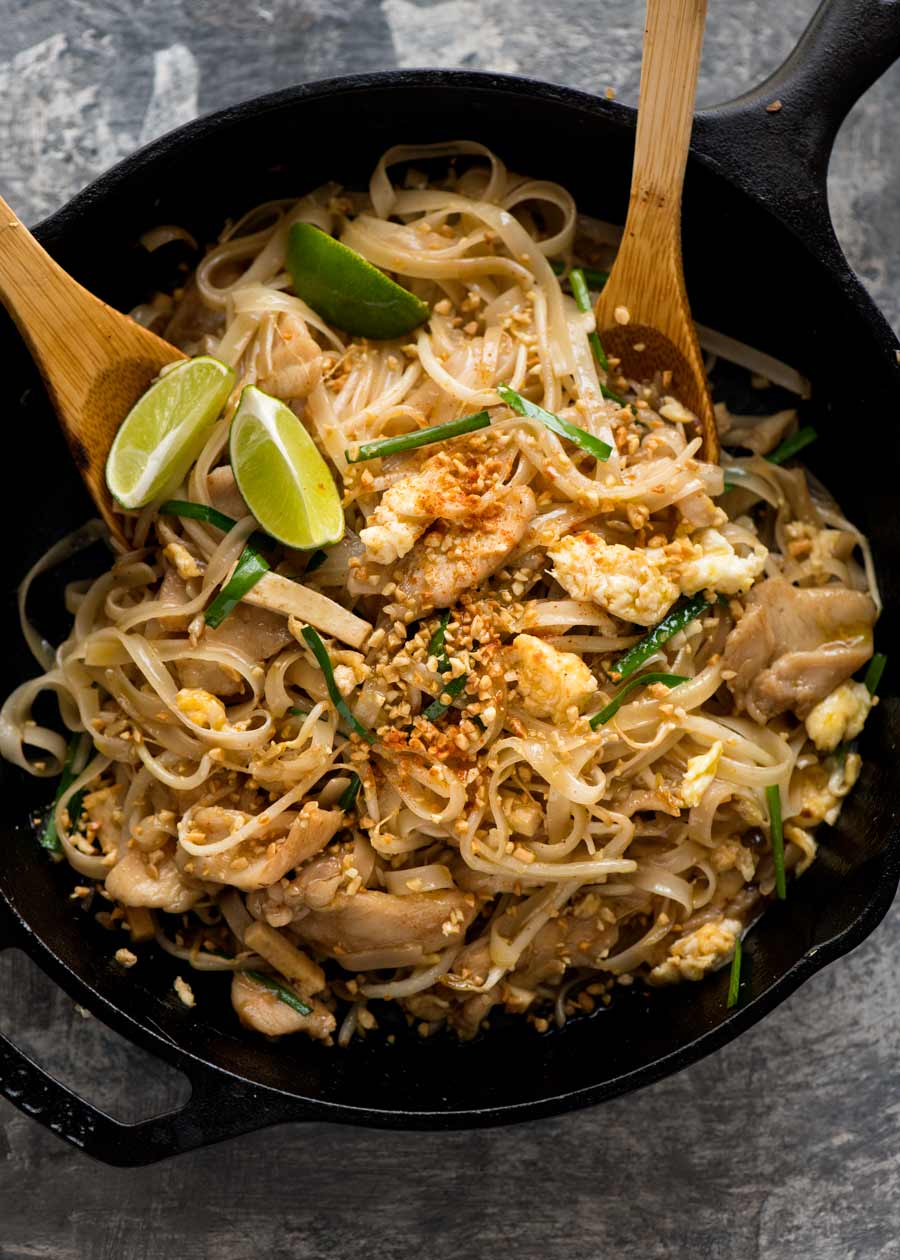
Pad Thai recipe
Pad Thai is one of the world's most beloved noodle dishes. Along with Thai Green Curry and Red Curry, this is the dish by which every Thai restaurant is measured. In fact, I was trying to find the "best" Thai restaurant in my area just last week and it brought me much amusement that Pad Thai was the baseline of a favourable or unfavourable rating for almost every review!
If you've been disappointed by basic Pad Thai recipes in the past, have faith – I promise this one delivers!
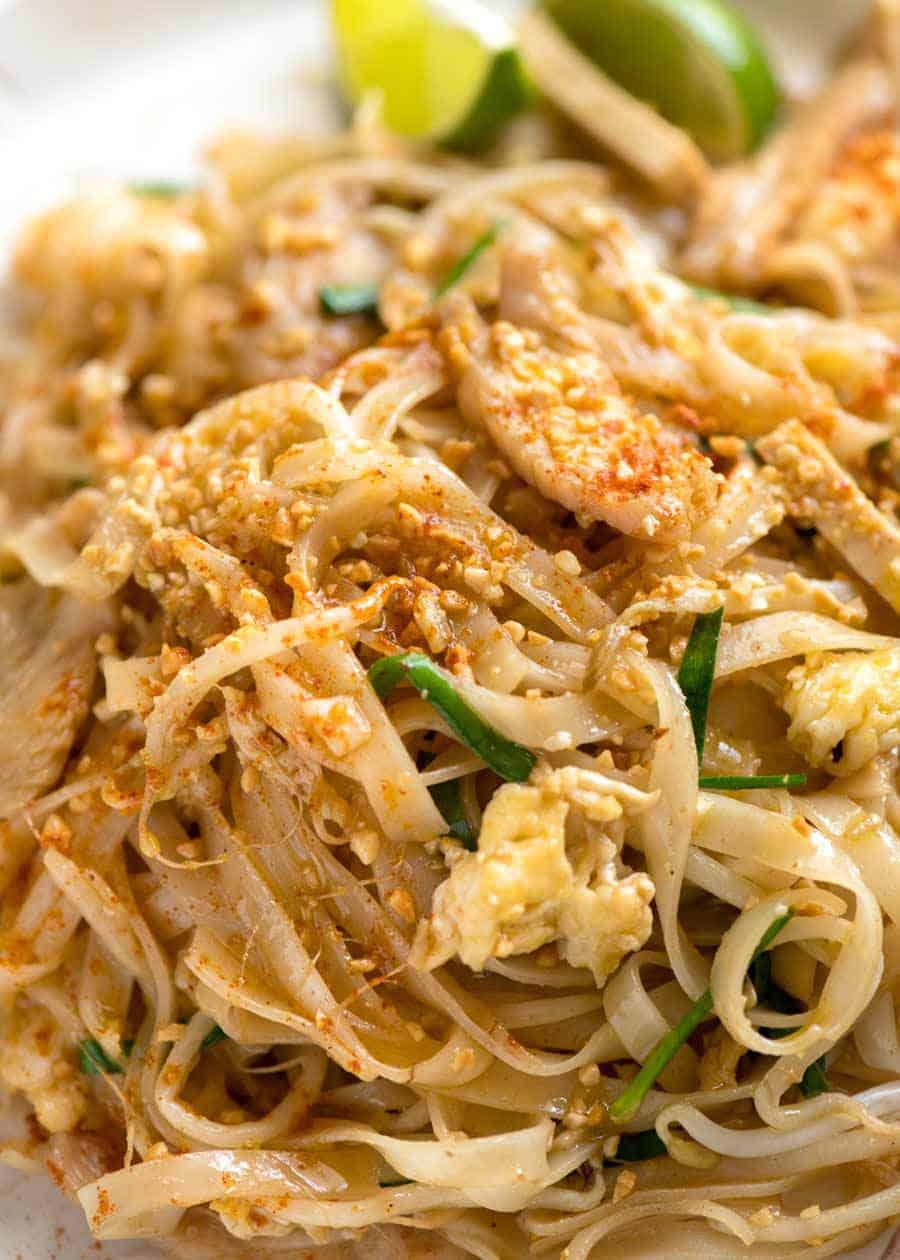
What is Pad Thai??
Pad Thai is a Thai noodle stir fry with a sweet-savoury-sour sauce scattered with crushed peanuts. It's made with thin, flat rice noodles, and almost always has bean sprouts, garlic chives, scrambled egg, firm tofu and a protein – the most popular being chicken or prawns/shrimp.
Authentic Pad Thai
Authentic Pad Thai on the streets of Thailand has a distinct fishy/prawny "funk" (which sounds thoroughly unappetising but is actually completely addictive and the very essence of true Thai street food). If authentic is what you're after, try this Prawn/Shrimp version I shared from Spice I Am Thai restaurant.
On the other end of the spectrum, a quick Google is all it takes to find a myriad of basic westernised versions which are typically made with not much more than something sour (vinegar, lime juice), soy sauce and sugar.These recipes will not taste like any Pad Thai you've had from a restaurant.
This recipe I'm sharing today lies in the middle between hardcore authentic version (which even I find borderline too fishy) and very basic westernised recipes that tend to lack the proper depth of flavour and are typically too sweet.
It truly stacks up to your favourite Thai takeout – except less oily (restaurants tend to use loads of oil) – but you will not need to hunt in the dark corners of an Asian store to find the ingredients.
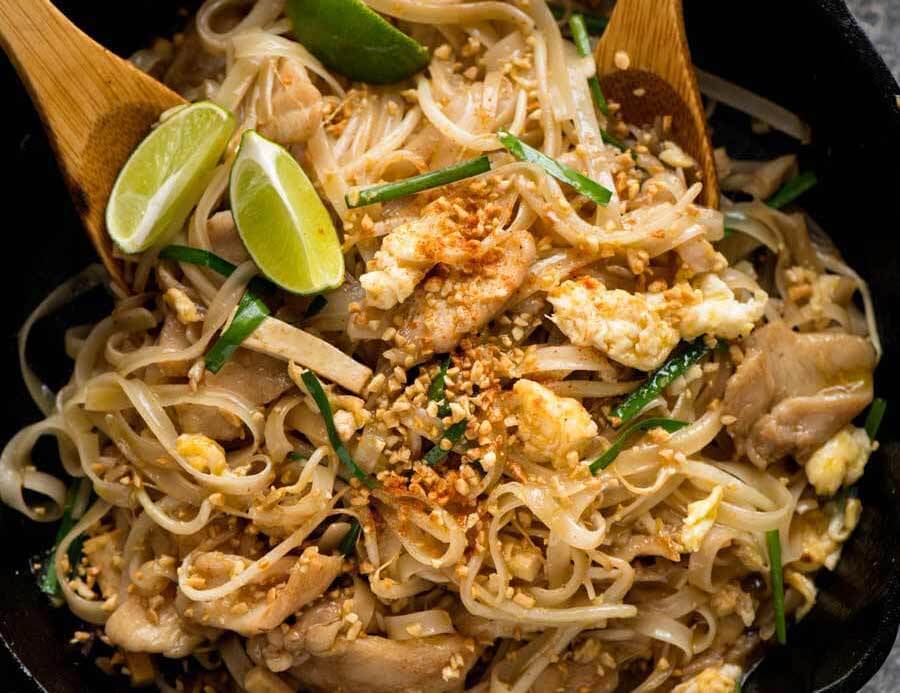
What is Pad Thai Sauce made of?
Pad Thai Sauce is made with fish sauce, oyster sauce, brown sugar and tamarind.
Tamarind is the ingredient that is the heart and soul of Pad Thai sauce, giving the sauce the sour flavour that Pad Thai is known for. It's an ingredient used in South East Asian cooking, like this Malaysian Beef Rendang.
Authentic Pad Thai is made with Tamarind pulp which comes in a block (size of a soap bar) which is then soaked in hot water, then pressed through a sieve to make tamarind puree.
To make life easy, I use ready made tamarind puree which issold at supermarkets here in Australia. 🙌🏻🙌🏻 Or Asian stores, obviously (and it's cheaper).
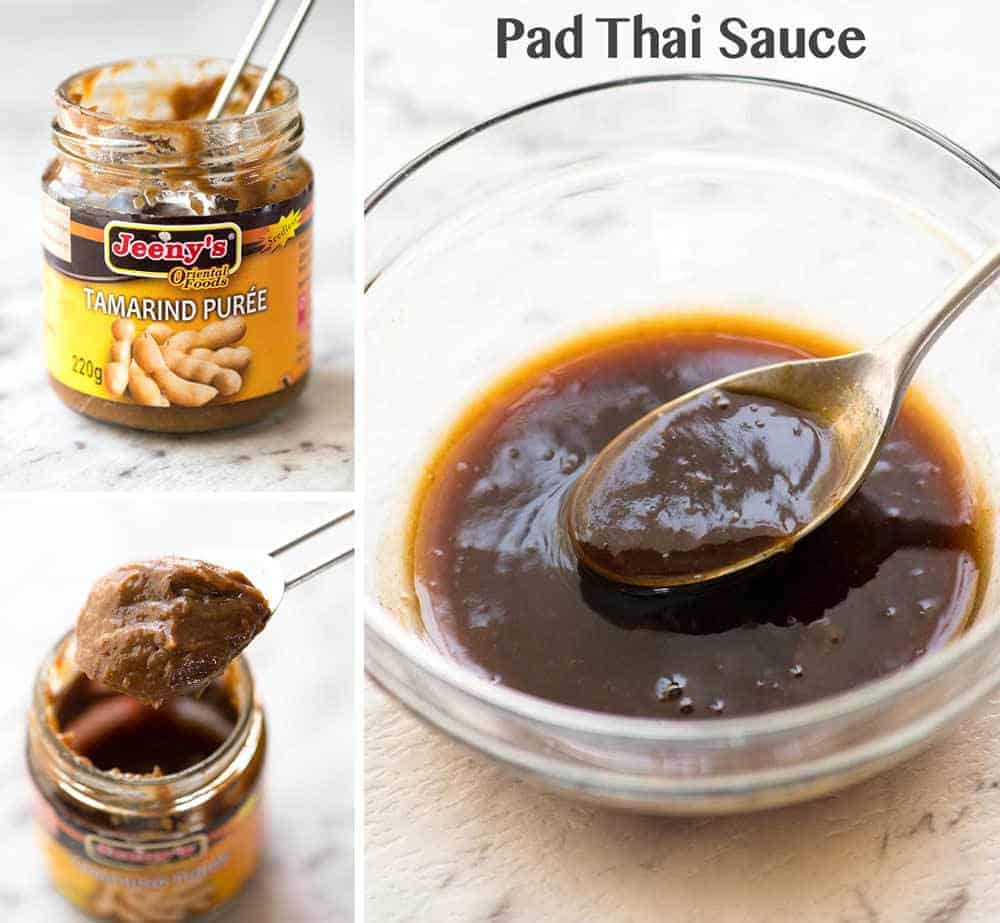
Can't find Tamarind Puree?
Believe it or not, a great substitute is ketchup. With a few tweaks to the recipe, you can achieve a similar, extremely good outcome!
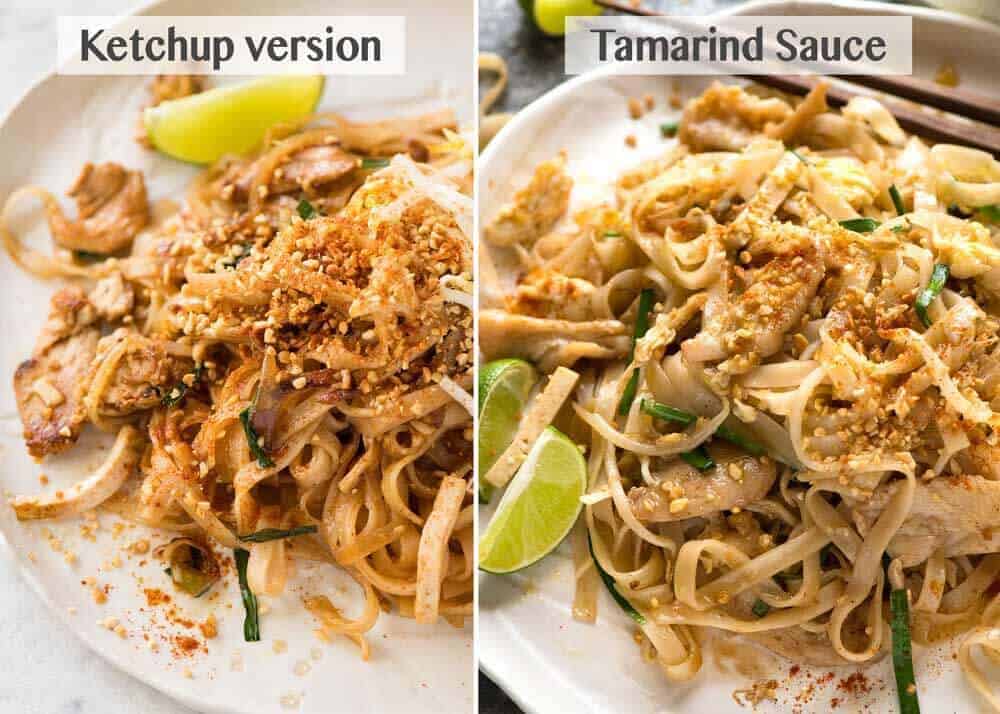
The Noodles
Pad Thai is made with flat dried rice noodles which can be found in everyday supermarkets.
I recommend Chang's "Thai style" rice noodles rather than the actual Thai brand rice noodles (Erawan Rice Sticks – red pack below) that are sold at supermarkets.
Chang's are less prone to breaking and require just 5 minutes of soaking in hot water.
The Erawan Rice Sticks are far more prone to breaking when stir frying.
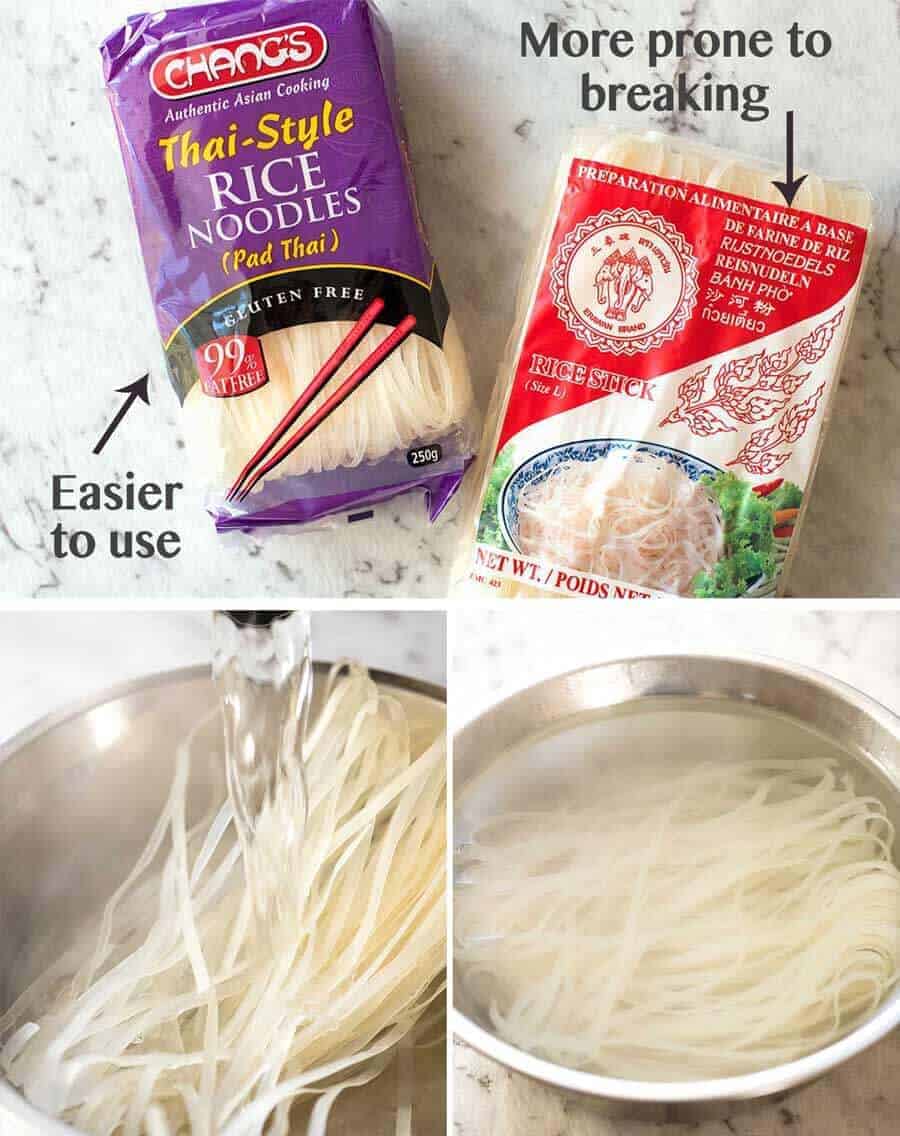
Other ingredients in Pad Thai
Here are two more ingredients that are very Pad Thai-centric: firm tofu and garlic chives.
You'll find firm tofu at the supermarket too – go for the firmest plain tofu you can find (read the label, give the packet a squeeze to check). Don't even think about trying this with soft tofu – it will just totally disintegrate!
Garlic chives are the big brother of normal chives. They taste like garlicky chives (I know, you're shocked right? 😂) and are shaped like blades of grass. These are also sold at supermarkets here in Australia (with the other fresh herbs).Sub with extra garlic and green onions if you can't find them.
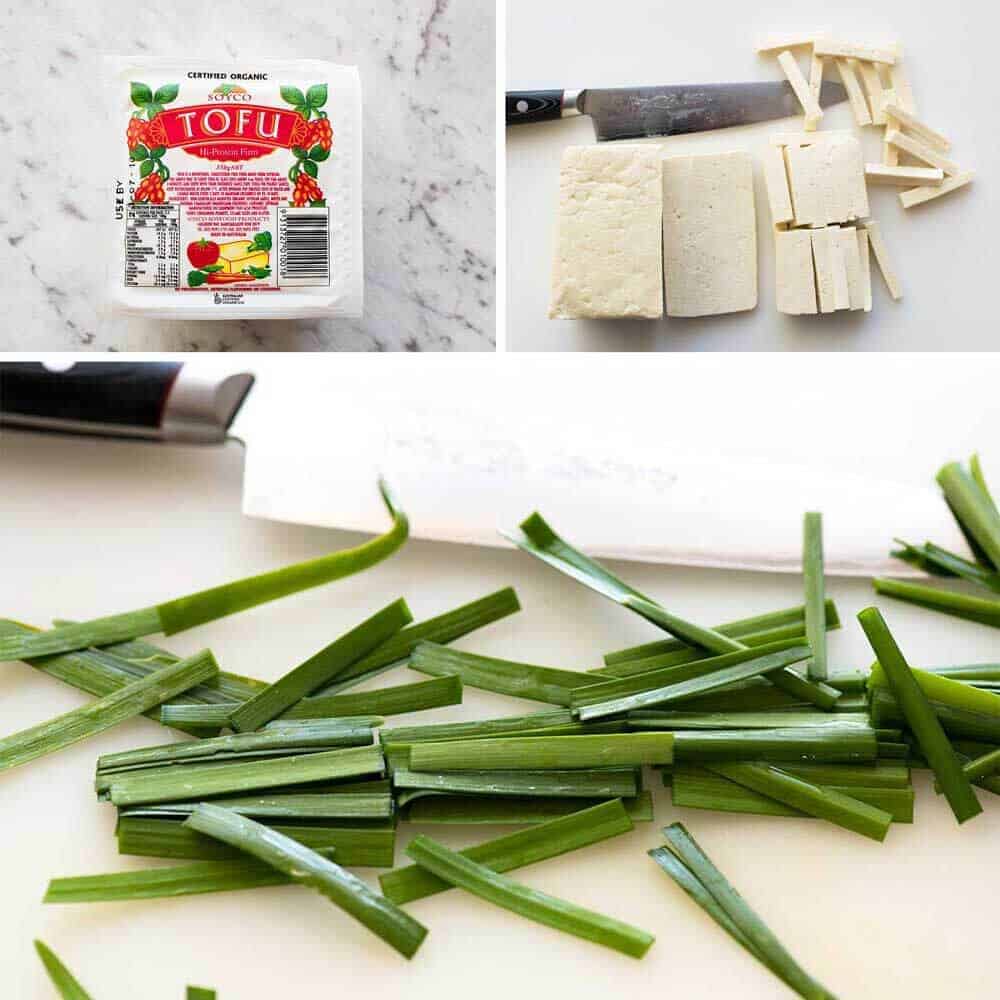
How to make Pad Thai
Once you've gathered the ingredients, the making part is actually very straight forward!
As with all stir fries, make sure you have all the ingredients prepared and ready to toss into the wok or skillet because once you start cooking, things move fast!
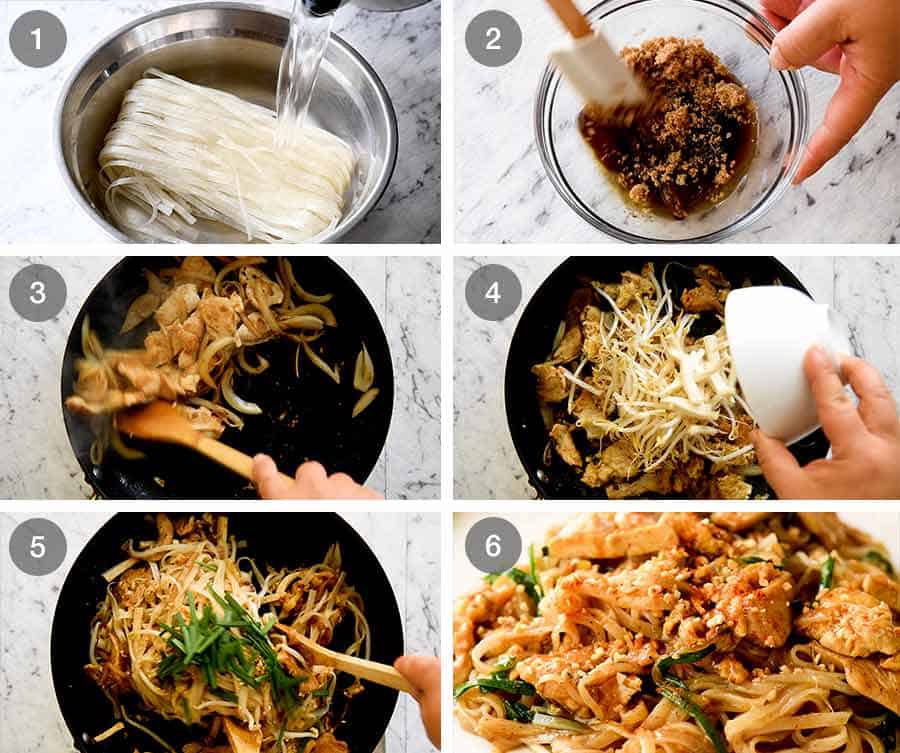
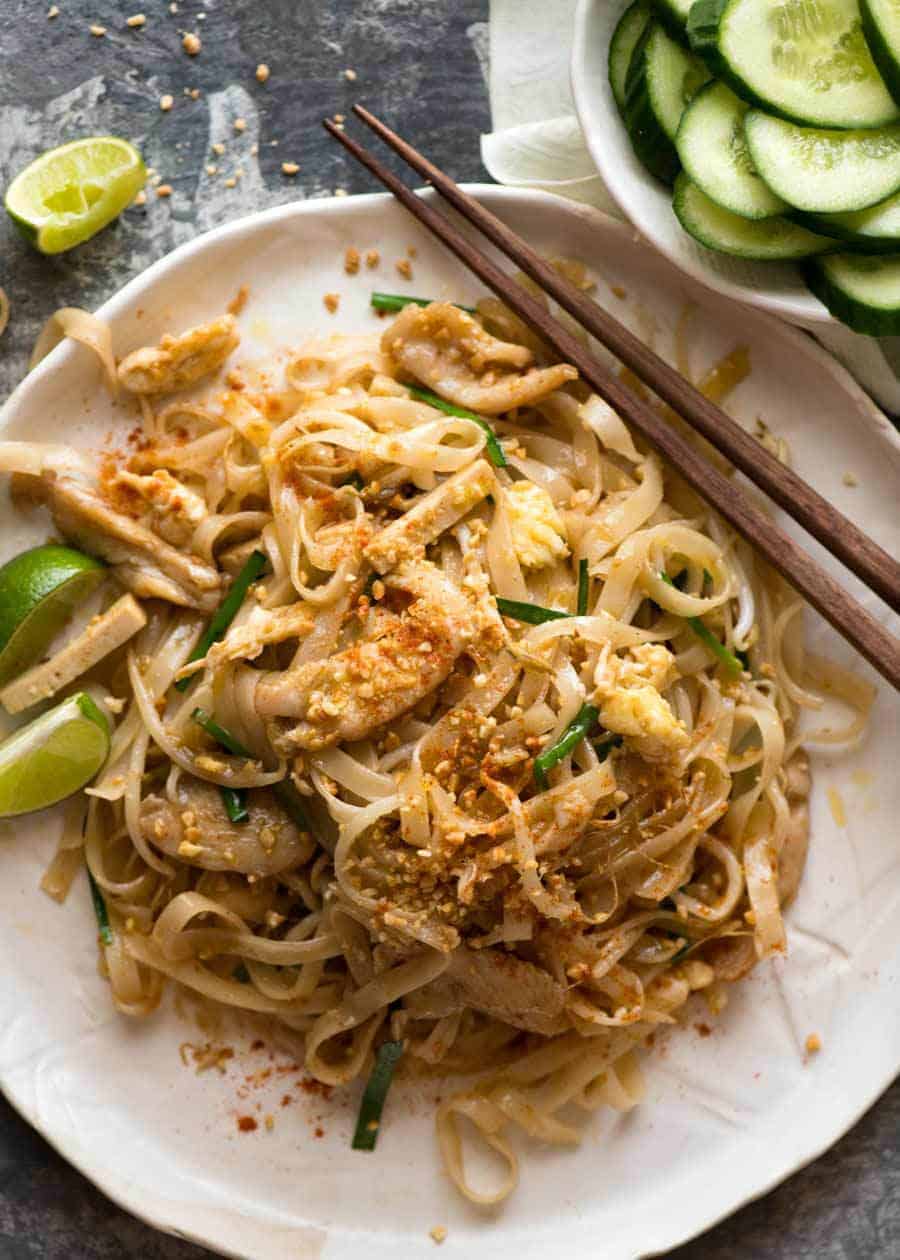
I cannot believe how I've just written about Pad Thai without barely pausing for a breathe.
I'm going to stop here before I run out of space for the recipe. 😂
So – meet your new favourite Pad Thai recipe. The one you will make over and over again, any night of the week, just by popping into Woolies on the way home. WHOOOOT!!!!! – Nagi xx
Watch how to make it
Subscribe to my newsletter and follow along on Facebook, Pinterest and Instagram for all of the latest updates.
Servings 2 – 3 people
Tap or hover to scale
Recipe video above. Here's a Pad Thai recipe that really does taste just as good as takeout from good Thai restaurants, and you'll find everything you need at the supermarket. See here for a truly authentic Pad Thai recipe, if that's what you're after – but note that most people find it a little too "real" for their palettes because Pad Thai outside of Thailand is dialled back on the fish sauce/dried shrimp "funk".
I use chicken here but feel free to switch with any protein, even prawns/shrimp.
- 125 g / 4oz Chang's Pad Thai dried rice sticks (Note 1)
Sauce:
- 1 1/2 tbsp tamarind puree (Note 2)
- 3 tbsp (packed) brown sugar
- 2 tbsp fish sauce (Note 3)
- 1 1/2 tbsp oyster sauce (Note 4)
Stir Fry:
- 2 – 3 tbsp vegetable or canola oil
- 1/2 onion , sliced (brown, yellow)
- 2 garlic cloves , finely chopped
- 150 g/5oz chicken breast (or thigh) , thinly sliced
- 2 eggs , lightly whisked
- 1 1/2 cups of beansprouts
- 1/2 cup firm tofu, cut into 3cm / 1 1/4″ batons (see photo)
- 1/4 cup garlic chives , cut into 3cm / 1 1/4″ pieces
- 1/4 cup finely chopped peanuts
For serving=:
- Lime wedges (essential)
- Ground chilli or cayenne pepper (optional)
- More beansprouts
-
Place noodles in a large bowl, pour over plenty of boiling water. Soak for 5 minutes, then drain in a colander and quickly rinse under cold water. Don't leave them sitting around for more than 5 – 10 minutes.
-
Mix Sauce in small bowl.
-
Heat 2 tbsp oil in a large non stick pan (or well seasoned skillet) over high heat. Add garlic and onion, cook for 30 seconds.
-
Add chicken and cook for 1 1/2 minutes until mostly cooked through.
-
Push to one side of the pan, pour egg in on the other side. Scramble using the wooden spoon (add touch of extra oil if pan is too dry), then mix into chicken.
-
Add bean sprouts, tofu, noodles then Sauce.
-
Toss gently for about 1 1/2 minutes until Sauce is absorbed by the noodles.
-
Add garlic chives and half the peanuts. Toss through quickly then remove from heat.
-
Serve immediately, sprinkled with remaining peanuts and lime wedges on the side, with a sprinkle of chilli and a handful of extra beansprouts on the side if desired (this is the Thai way!). Squeeze over lime juice to taste before eating.
1. I've tried every rice stick sold at supermarkets in Australia. Chang's is the best – it's less prone to breaking when it's tossed in the pan. See photo in post. If you can't find Chang's, use another that is 2 – 3 mm / 0.1 " thick. Avoid wider rice noodles, they are more prone to breaking.
If using the the Erawan brand rice noodles (see photo in post), soak in room temp tap water for 40 – 45 minutes until noodles are silky but still a touch firm. DO NOT follow the packet directions to boil – they disintegrate in the pan!
125g doesn't sound like much noodles but they expand when soaked.
2. Tamarind is the heart and soul of Pad Thai. The authentic version starts with tamarind pulp which needs to be soaked then strained. Puree is sold in a jar at supermarkets (Asian section), far easier! It's a scoopable soft paste (see video).
It can be labelled as Tamarind Puree, Concentrate or Paste. In Australia it's sold at Woolies, Coles, Harris Farms (Asian section) as well as Asian stores. There's a few different ones on Amazon US – here is the cheapest one.
Use leftovers for Beef Rendang !
KETCHUP SUBSTITUTE if you can't find tamarind. Use this for the Pad Thai Sauce instead of ingredients listed above:
1 tbsp ketchup, 2 tbsp brown sugar, 2 tbsp fish sauce, 2 tsp oyster sauce, 1 tsp dark soy sauce*, 2 tbsp rice vinegar (or 1 tbsp white vinegar).
See in post for explanation, and cynics, don't judge until you've tried this! It's remarkably good and quite close to the base Pad Thai recipe!:
* This is mainly for colour, so can be substituted with light or normal soy sauce and flavour will still be the same.
3. Can be substituted with light soy sauce though you will lose a bit of the flavour edge that fish sauce gives it.
4. Not in authentic Pad Thai but is essential for this everyday version.
5. Garlic chives look like blades of grass and taste like garlicky chives. If you can't find them, it's not a deal killer. Best to substitute with chopped shallots (aka green onion / scallions)/..
6. General note: I use a skillet here, I find it easier. But if you have a well seasoned wok, make it in that if you want!
7. Nutrition per serving, assuming 2 servings. The weight doesn't take into account the water absorbed by the noodles. I think it's closer to 350g / 12oz per serving. It's a generous serving!
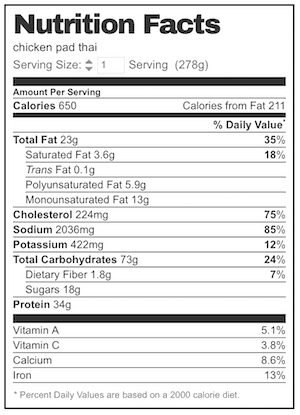
Originally published May 2018. Updated January 2022 with a new video, new step photos. No change to recipe.
More Thai food favourites
Good Thai is sorely lacking in my neighbourhood – so it's critical to have recipes for all my favourite Thai dishes!
Life of Dozer
Flashback to when I first published Pad Thai back in May 2022 when he tore his cruciate ligament and was confined to a small space during his recovery. He does an excellent sad face. 😢
Happy to report that 3 months later, he was back to his wild, crazy self!

Source: https://www.recipetineats.com/chicken-pad-thai/
0 Response to "Pad Thai Chicken Beef or Pork"
Post a Comment